In the last few days, I’ve been involved in a lot of discussions about Senate reform, and many times I’ve had people insist that voters make a choice to hand control of their vote to their party, and any voter should be able to vote below-the-line if they wanted to. These arguments often insist that below-the-line voting is easy, and stray into elitist arguments about ordinary voters being lazy.
@DineshMathew @jon_lawrence @timhollo @thewetmale @daveyk317 Mate, democracy doesn’t get much easier then numbering 150 boxes.
— Van Badham (@vanbadham) February 17, 2016
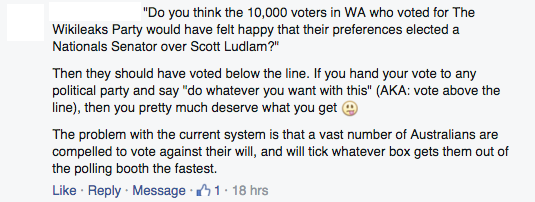
Now there are multiple different reasons why voters lack informed choice when voting in the Senate, including how difficult it is to understand the impact of a GVT even when you’re an electoral expert, but I’m just going to focus on the idea that it’s easy to vote below-the-line, and thus voters have a reasonable option if they wish to opt out of the parties’ preference machine.
In short, approximately 30% of below-the-line votes end up in the informal pile, and as the number of candidates increase there is a corresponding increase in the overall informal rate, and a decline in the below-the-line rate.
The first problem with below-the-line voting is the scale of the number of candidates. Van Badham might say that it’s easy to number 150 boxes, but there is a clear relationship between the number of candidates who run in a Senate race, and both the informal rate and the number of people who cast a formal below-the-line vote.
In jurisdictions like Tasmania and the ACT, below-the-line voting makes up a significant proportion – over 10% at every election since 2001, and close to 10% in the Northern Territory. Unsurprisingly, these jurisdictions usually have much smaller ballots, although in Tasmania we saw the below-the-line rate drop from 20.2% in 2010 to 10.3% in 2013 when the number of candidates increased from 24 to 54.
The correlation between the informal rate and the number of candidates running is 0.29 – definitely positive, but not a very strong relationship.
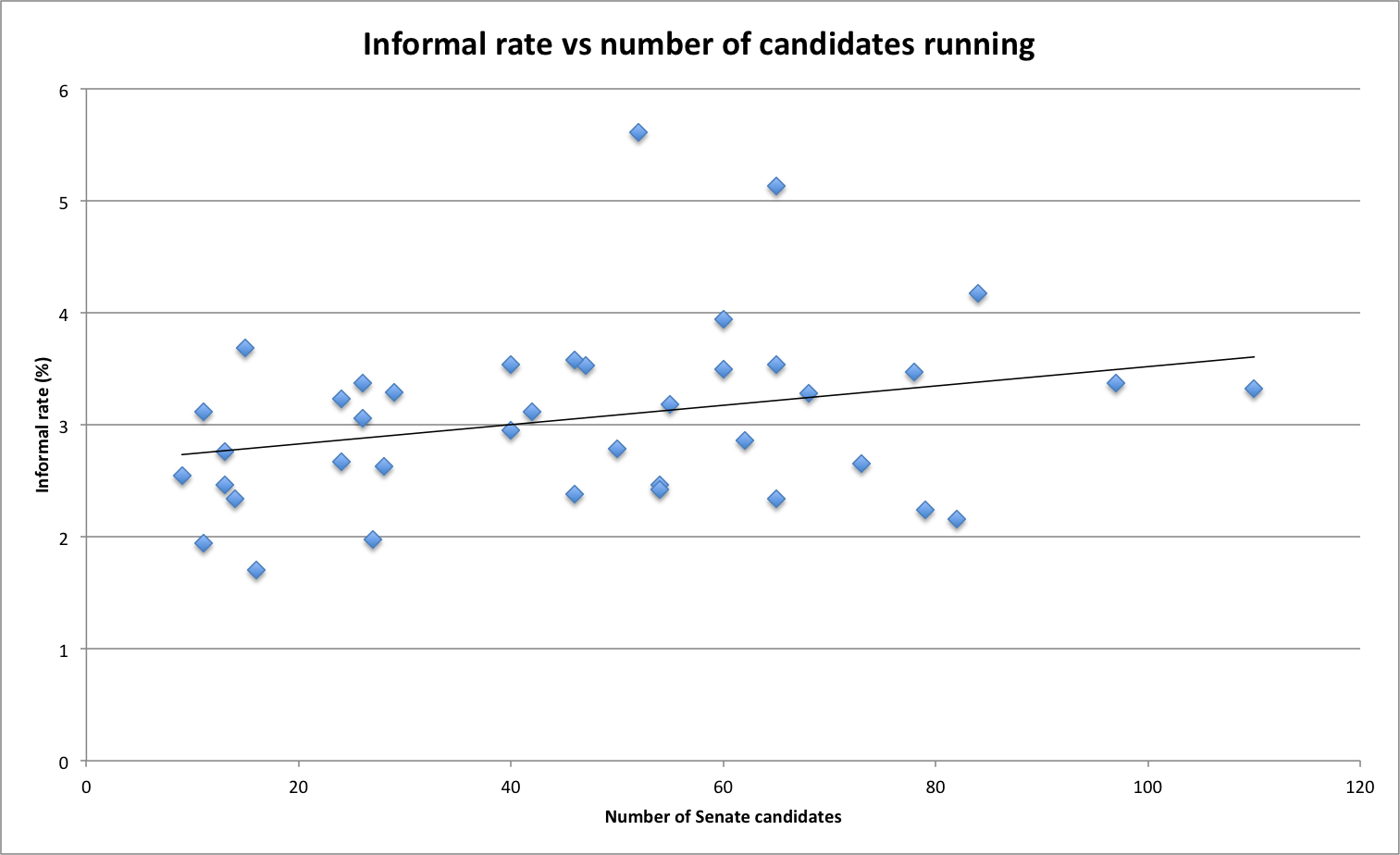
But when you look at how many voters choose below-the-line voting, there is a strong relationship – a correlation of 0.74 (where 1 is a perfect correlation).
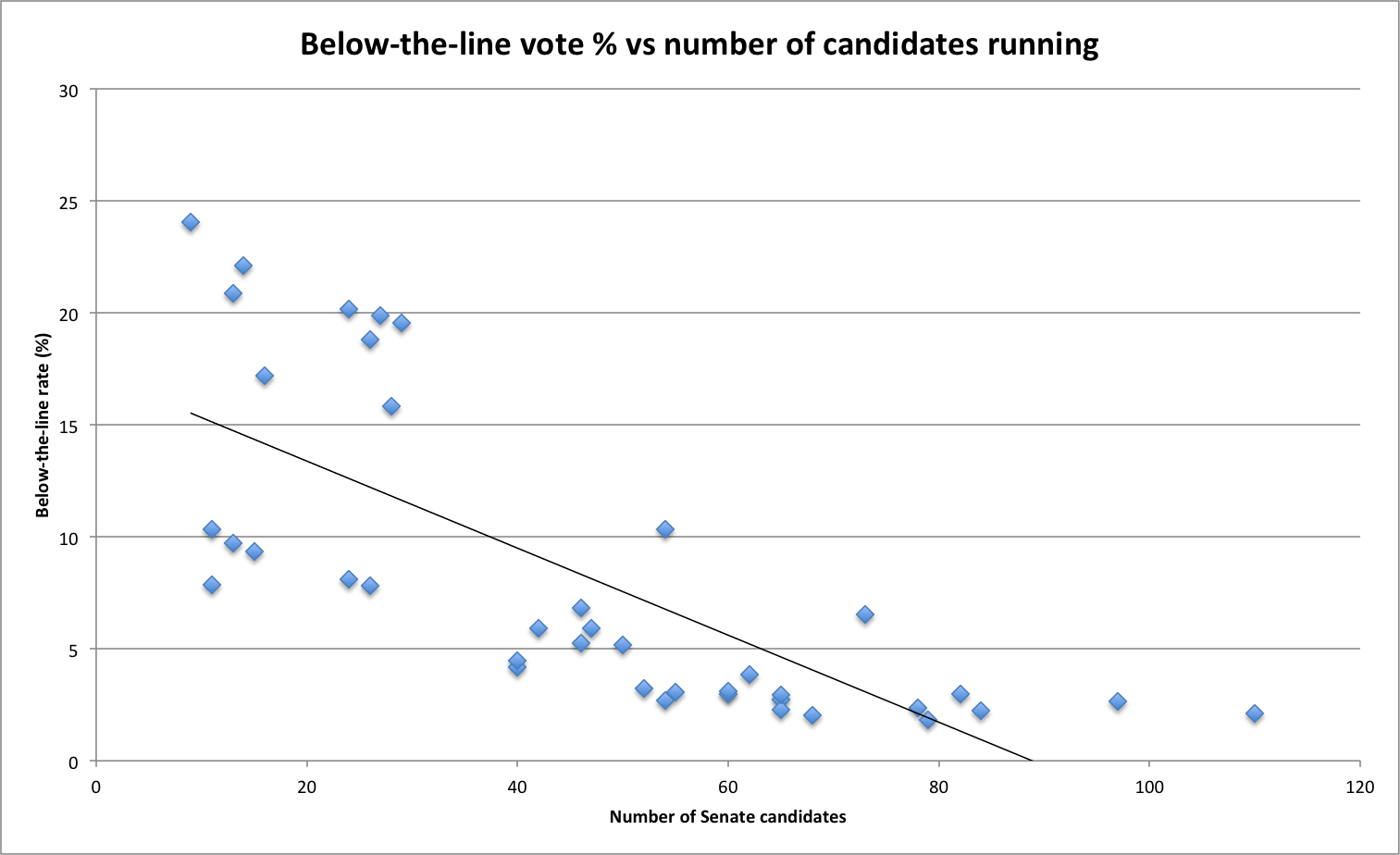
So the number of candidates running has a strong impact on whether people choose to opt out of the group voting ticket system. Considering how much more difficult it is to correctly vote below-the-line for 110 candidates (NSW 2013, 2.1% voted below-the-line) than for 14 candidates (ACT 2001, 22% voted below-the-line) we can only assume that voters in part vote above-the-line not because they trust their party, but because it is so much easier.
But what about the informal votes? If below-the-line votes make up a small part of the formal vote, is the same also true of informal votes? Actually, no. In 2001, the AEC conducted a survey where they examined all 470,961 informal Senate ballots and classified into twelve categories according to the reason the vote was informal. I’ve simplified this down to four categories:
| Type of error | % of informal vote | Estimated votes |
| Below-the-line error | 47.39% | 223,188 |
| Blank | 34.04% | 160,315 |
| Other | 11.01% | 51,853 |
| Above-the-line error | 3.31% | 15,589 |
In 2001, only 553,521 voters cast a formal below-the-line vote (this number has never gotten above 500,000 again since), yet over 200,000 people attempted to vote below the line and were considered informal.
This was an informal rate of 28.7% for people who tried to vote below-the-line, compared to an overall informal rate of 4.05%.
We haven’t gotten fresh data since 2001, but the system hasn’t changed – if anything it’s gotten harder to vote below-the-line, and as a consequence we saw a drop in the below-the-line votes and the informal vote down to 2007, and then it surged again in 2010.
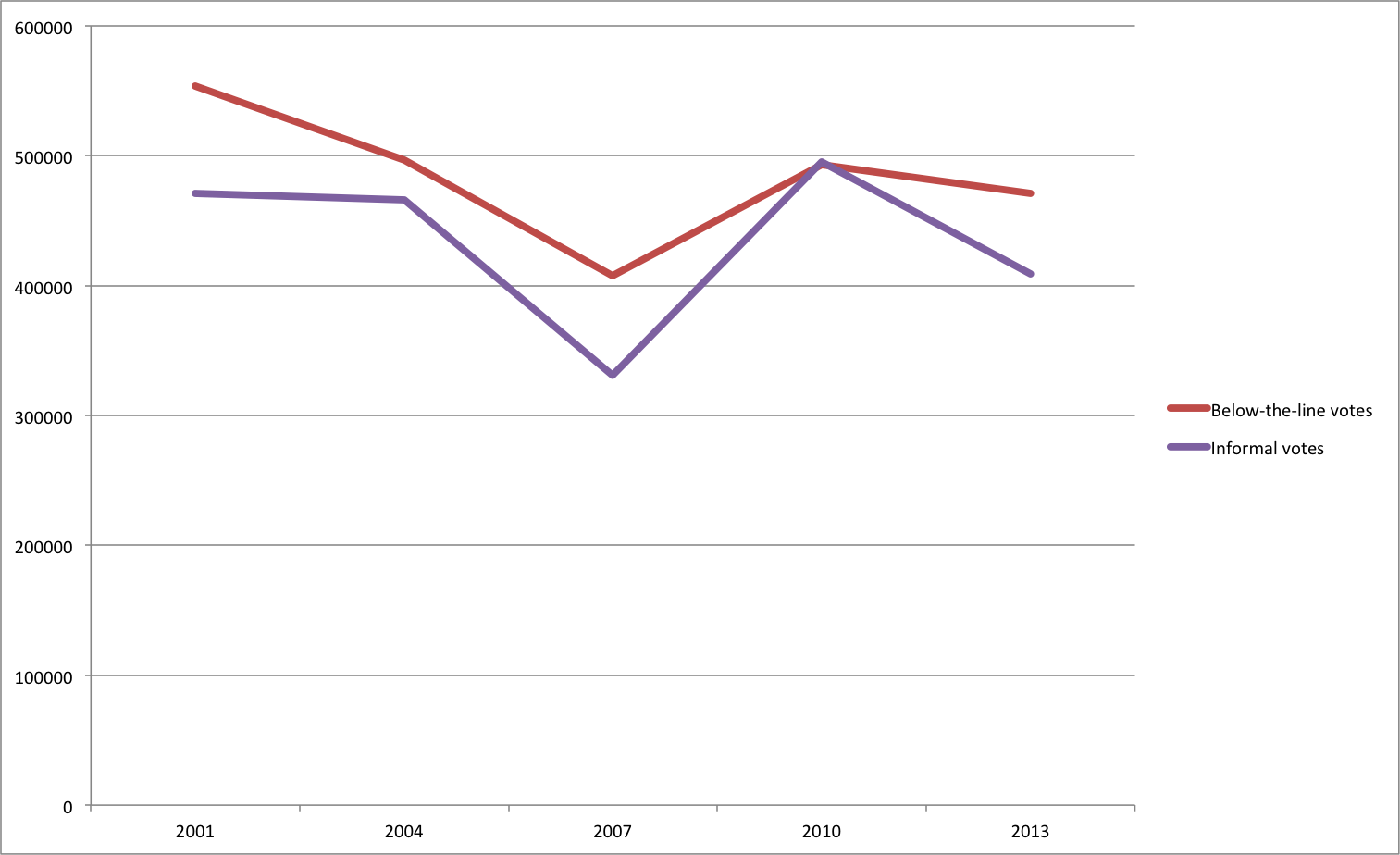
If you assume 47.4% of informal votes being below-the-lines, the below-the-line informal rate would have peaked at 32.2% in 2010 and been at 29.2% in 2013.
It’s also worth noting that the kind of person who chooses to vote below-the-line is probably more engaged in politics and has chosen to try to make up their own mind, yet we’ve seen an informal rate around 30% for people in that group.
In summary:
- It’s bloody hard to cast a formal vote below-the-line, due to the number of candidates. When the number of candidates increases, the informal rate increases and people don’t cast as many below-the-line votes.
- Of the informal vote, almost half are below-the-line, and errors below-the-line are 14 times more likely than above-the-line.
When you consider these facts, it is impossible to argue that voters have a reasonable alternative to putting their vote in the hands of their party. You cannot say that voters have made an informed and free choice to delegate their preferences to their party when the alternative is time-consuming and likely to make your vote informal (not to mention the difficulty of choosing between many dozens of completely unknown candidates).
Voters aren’t stupid or lazy to baulk at voting below-the-line. Voting should be made simple for people, but also structured so that votes count the way that voters would expect them to count. Letting voters choose their own preferences above the line, or cast a much easier below-the-line vote, will mean that voters have real freedom to vote above the line, below the line, for many candidates or for few.
Update: If you would like to do any further analysis, you can download the data here. One thing that was pointed out is that Tasmania and the ACT both have Hare-Clark for their state/territory elections, so voters are used to numbering below the line. If you remove those two states from the data, the relationship between below-the-line rate and the number of candidates becomes even stronger.


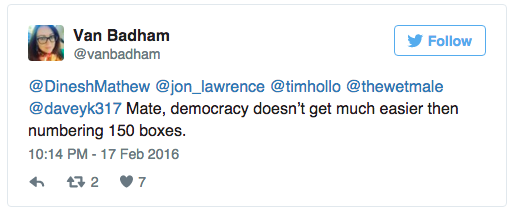

I’m 70 and voted in many elections. I have never “soiled” my fingers by touching a how-to-vote ticket – and have never voted above the line. I am truly amazed that so many people are so superficial in how they vote. Our political institutions are a laughing stock – simply because voters refuse to spend just a few minutes more to select their own preferences. It is so sad! So many complain that our politics “stinks” – and it does – but the fault lies squarely with all those people who just can’t be bothered.
Comments are closed.